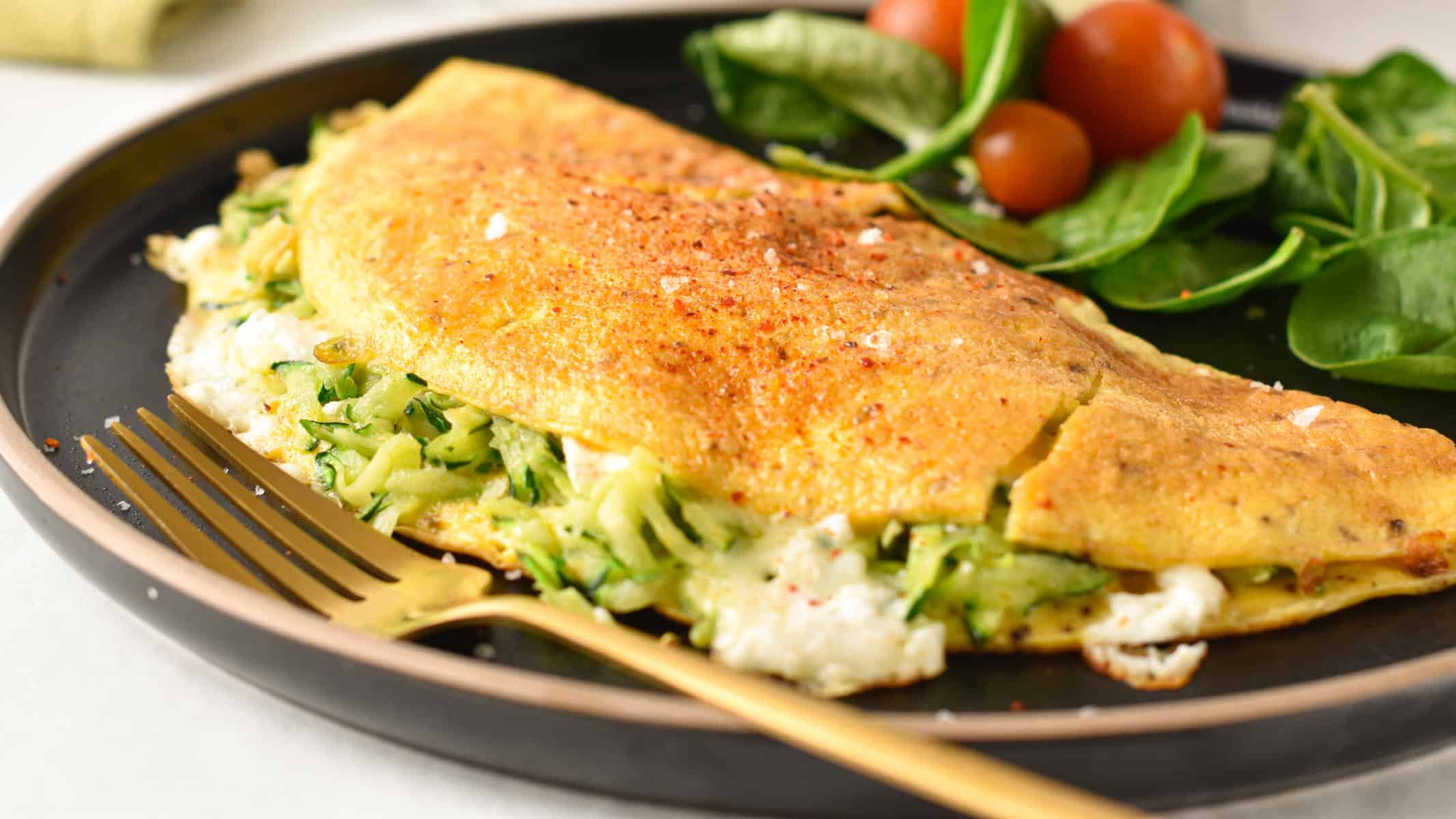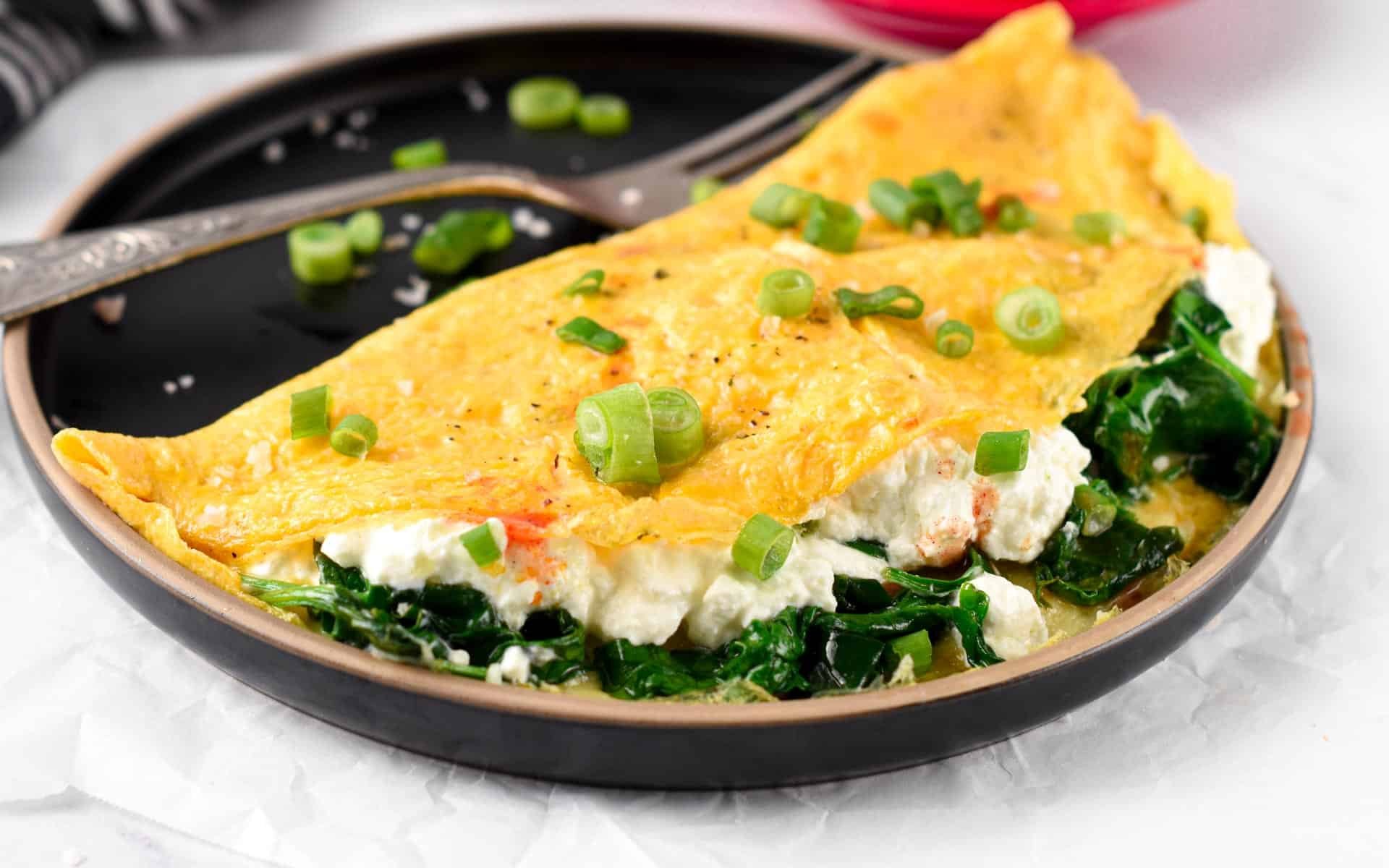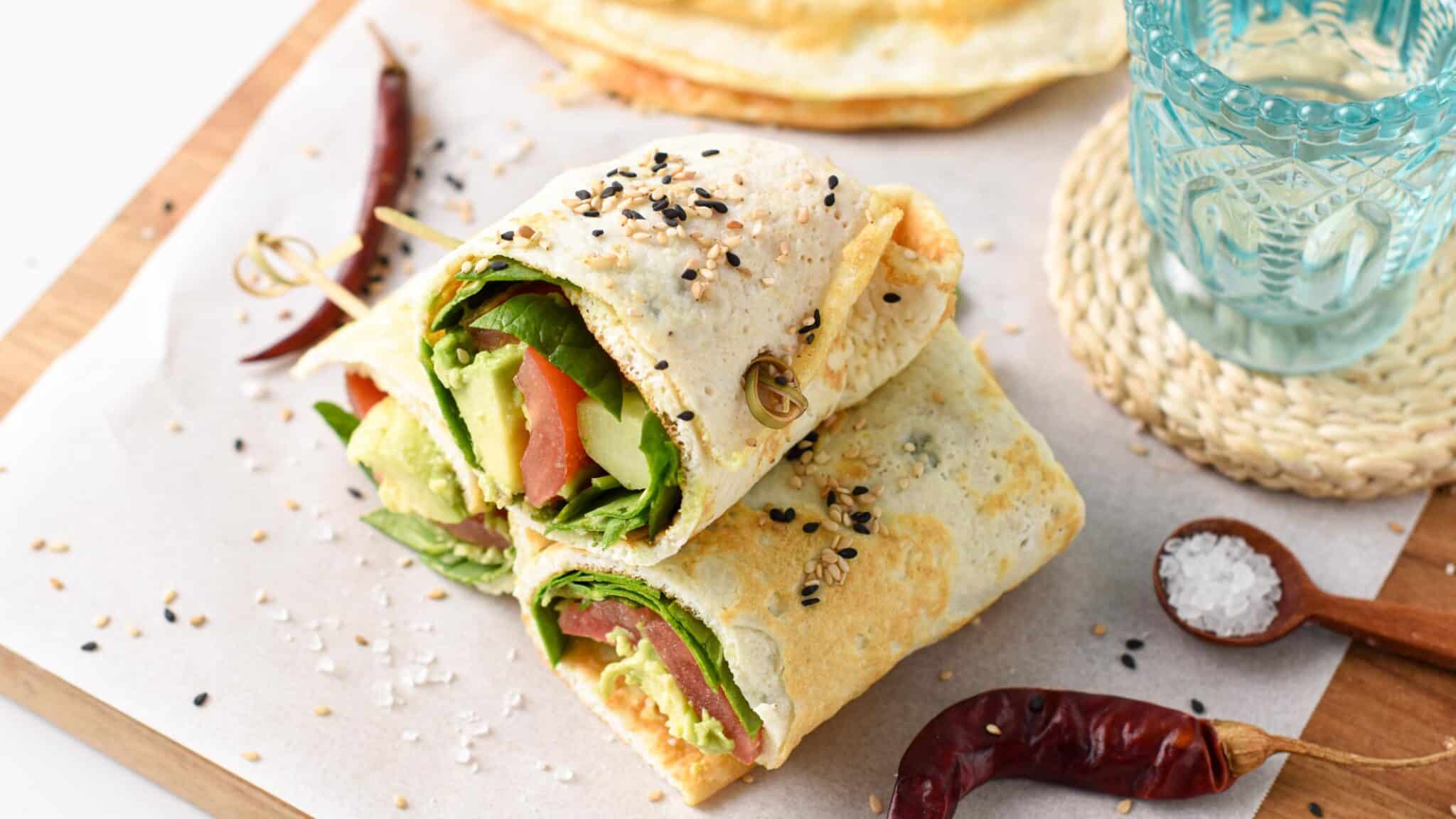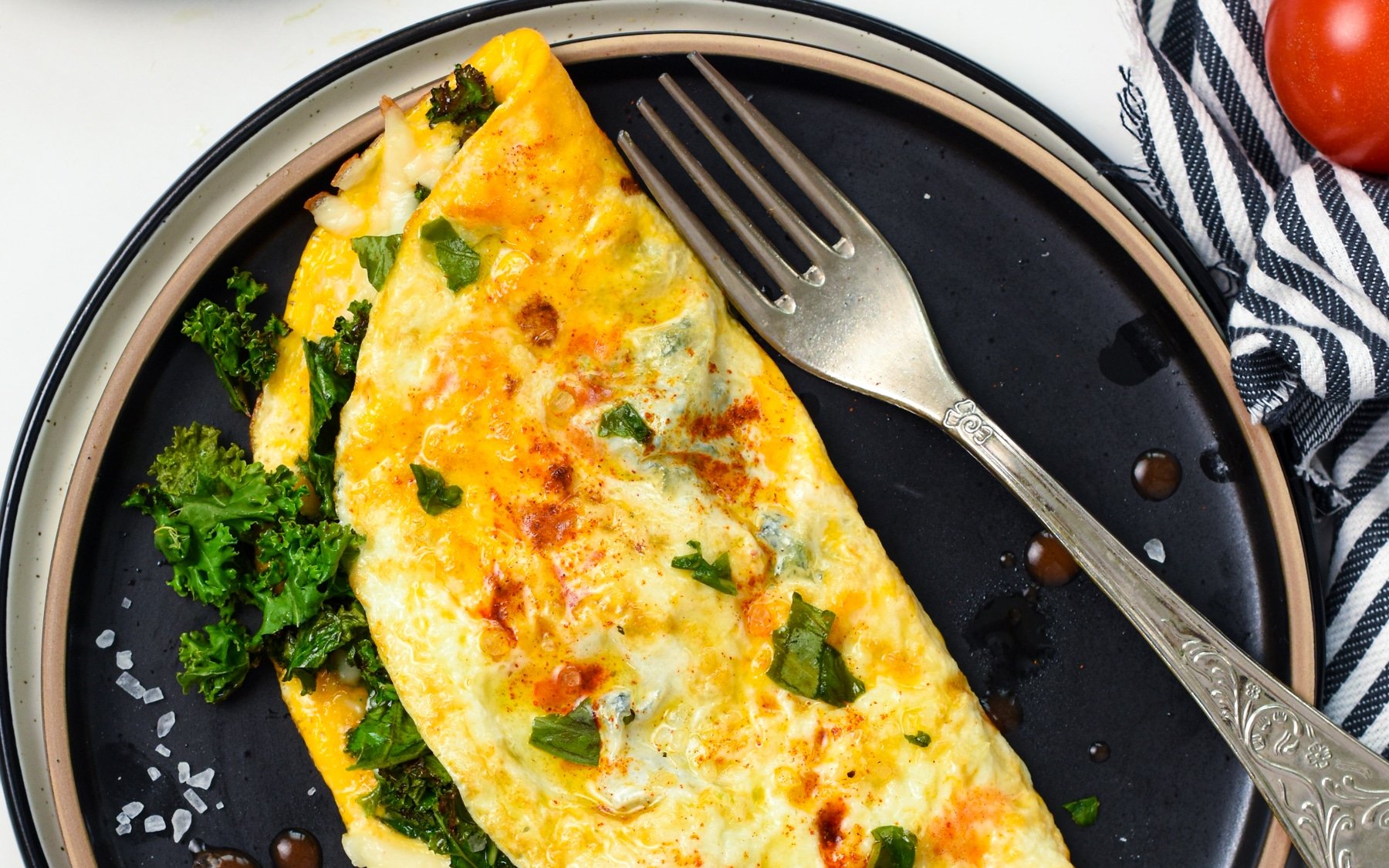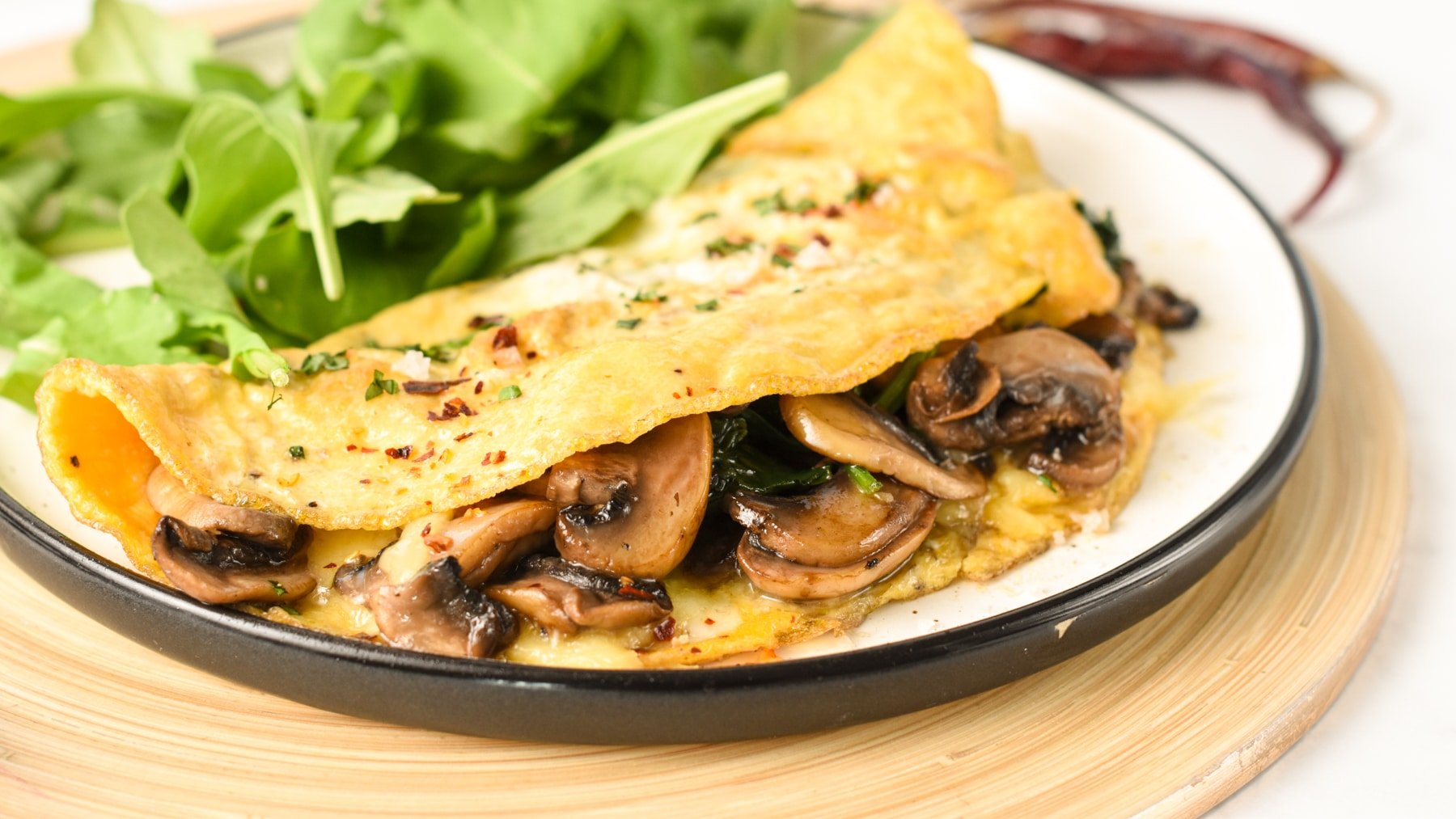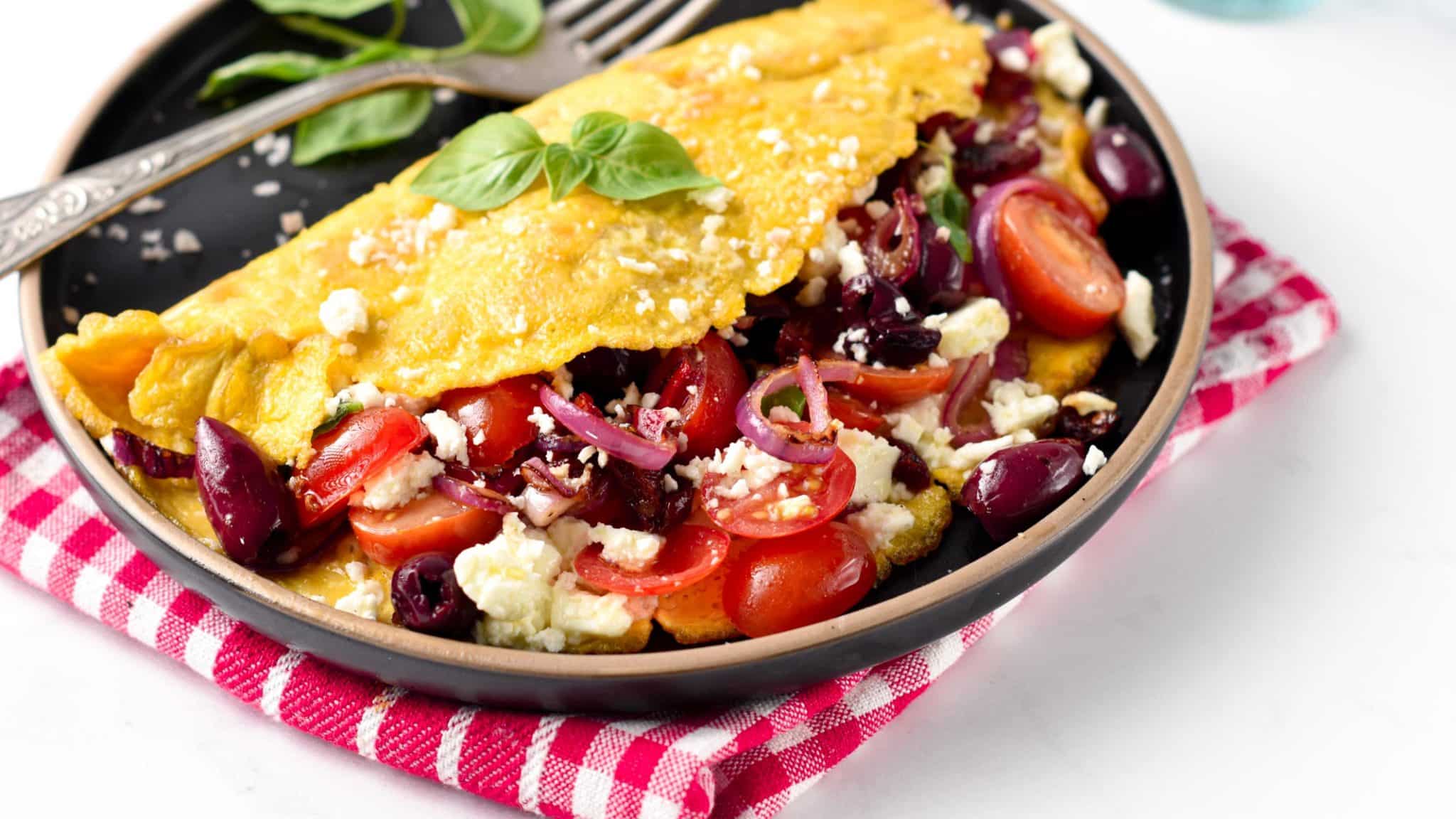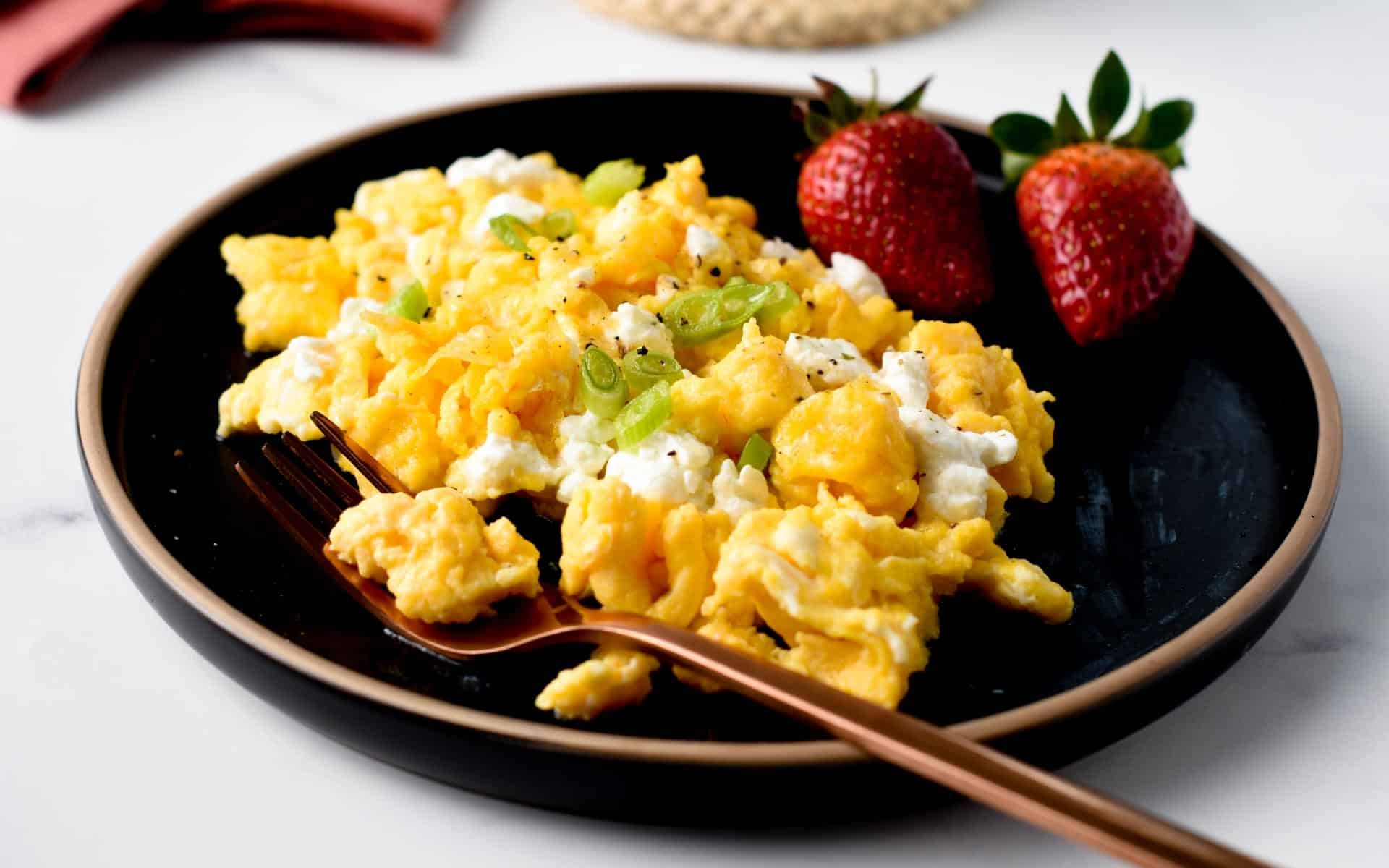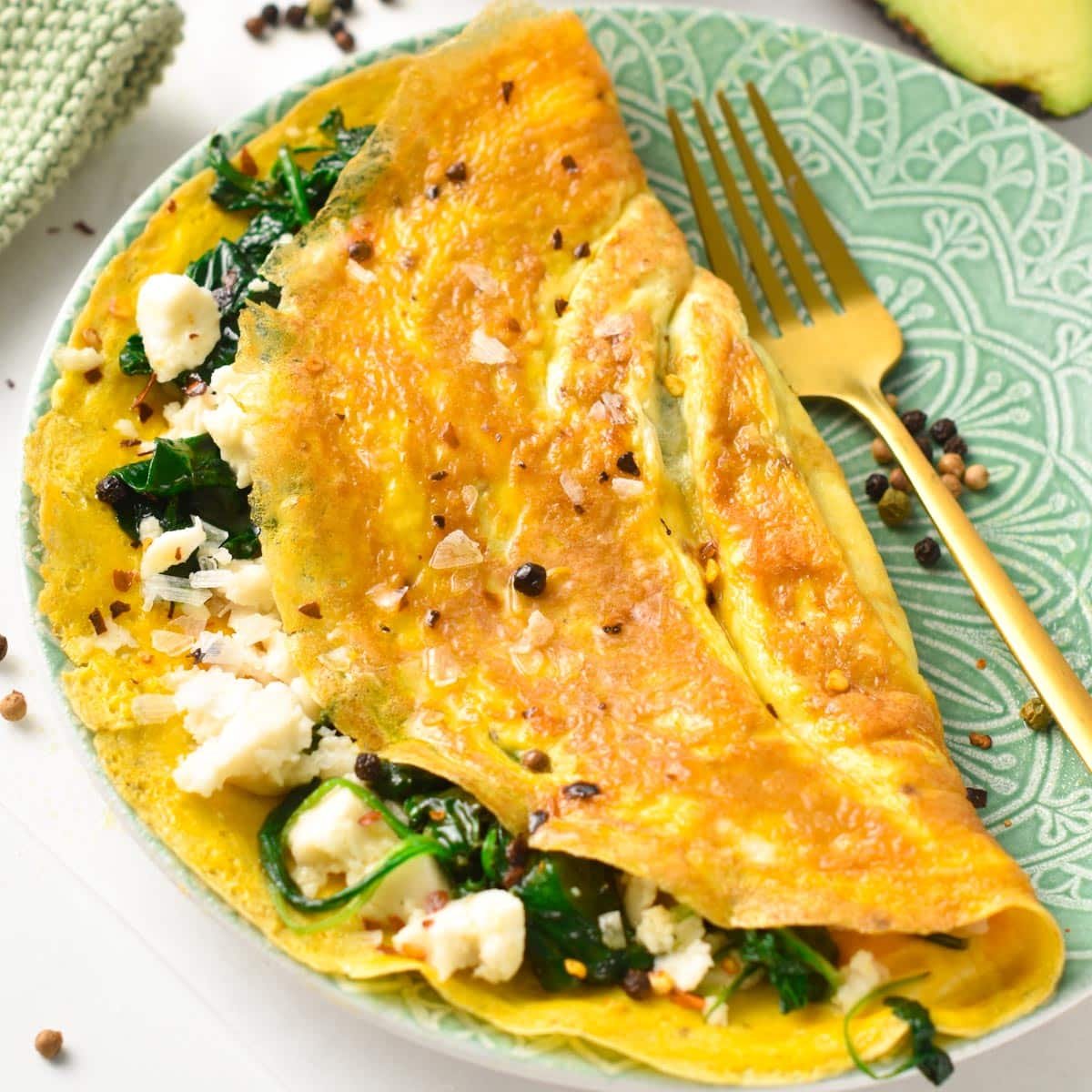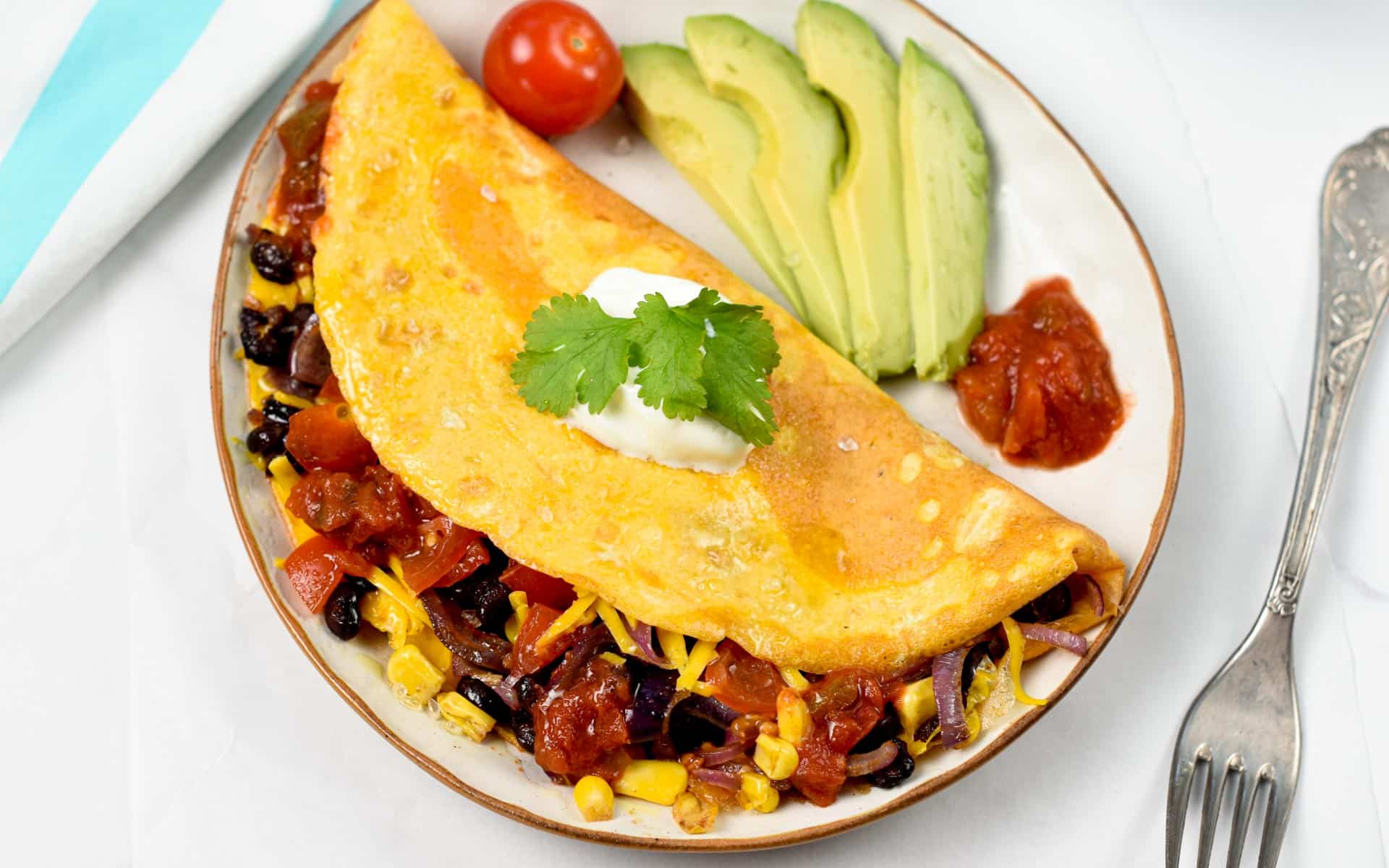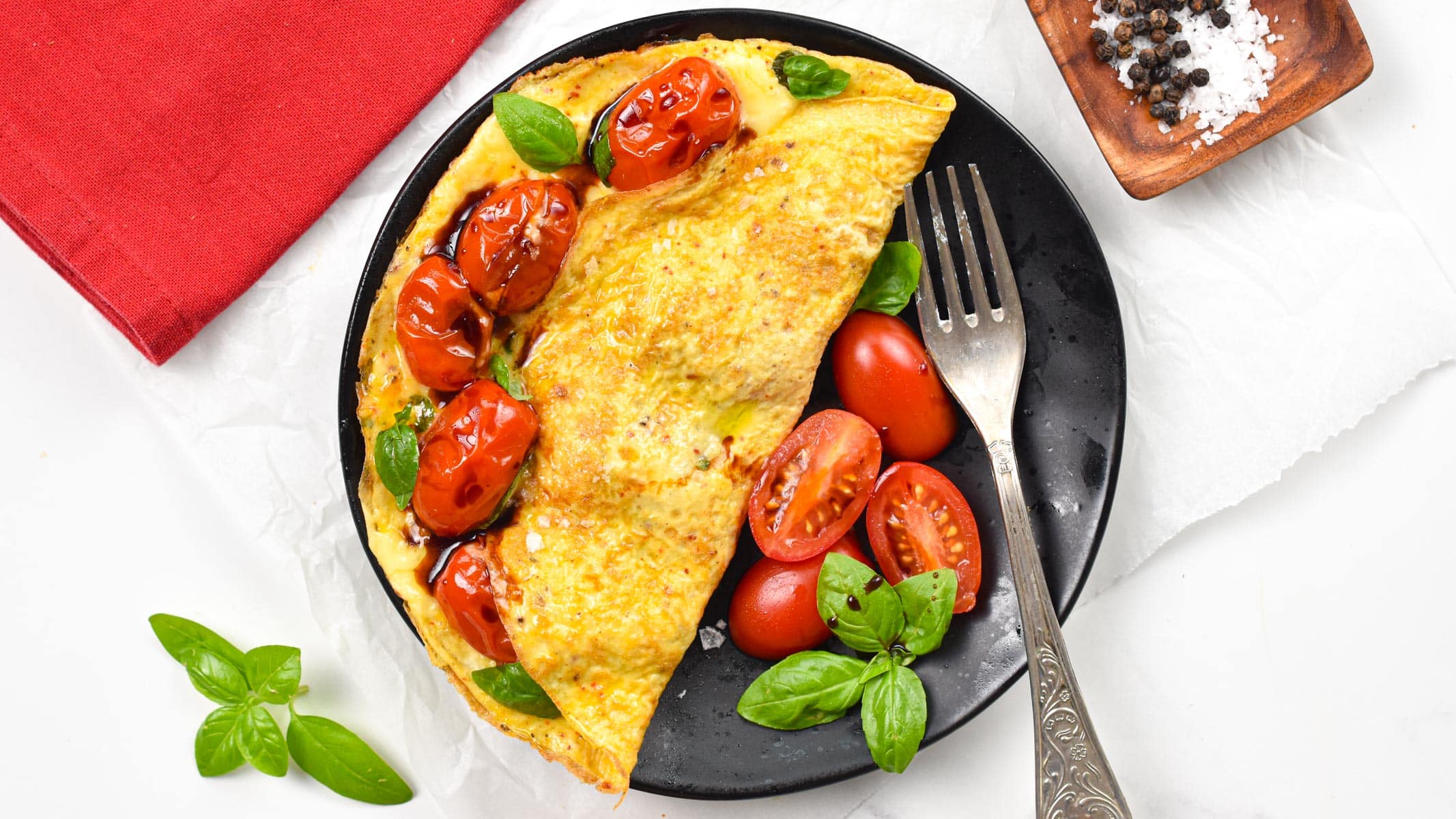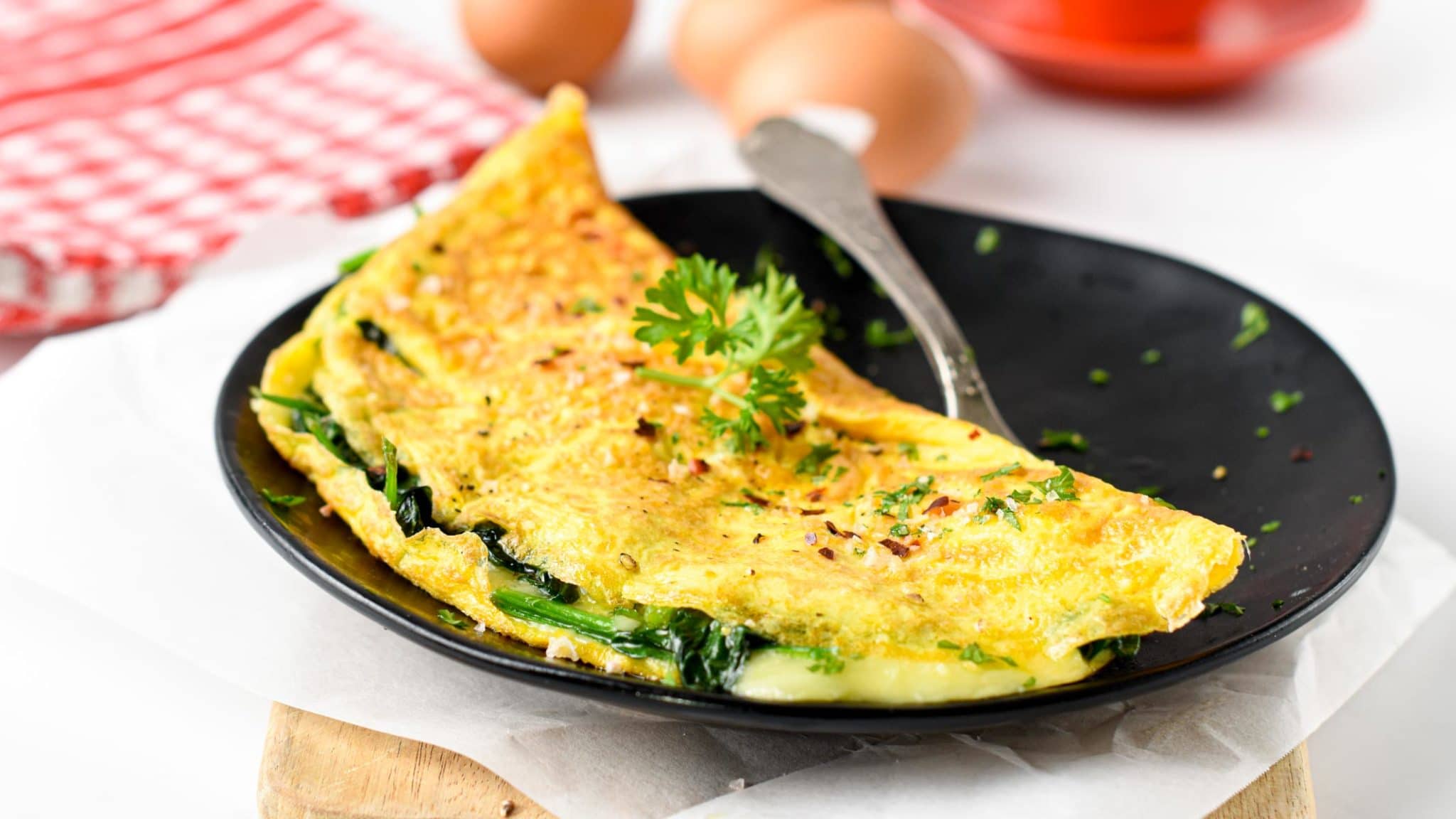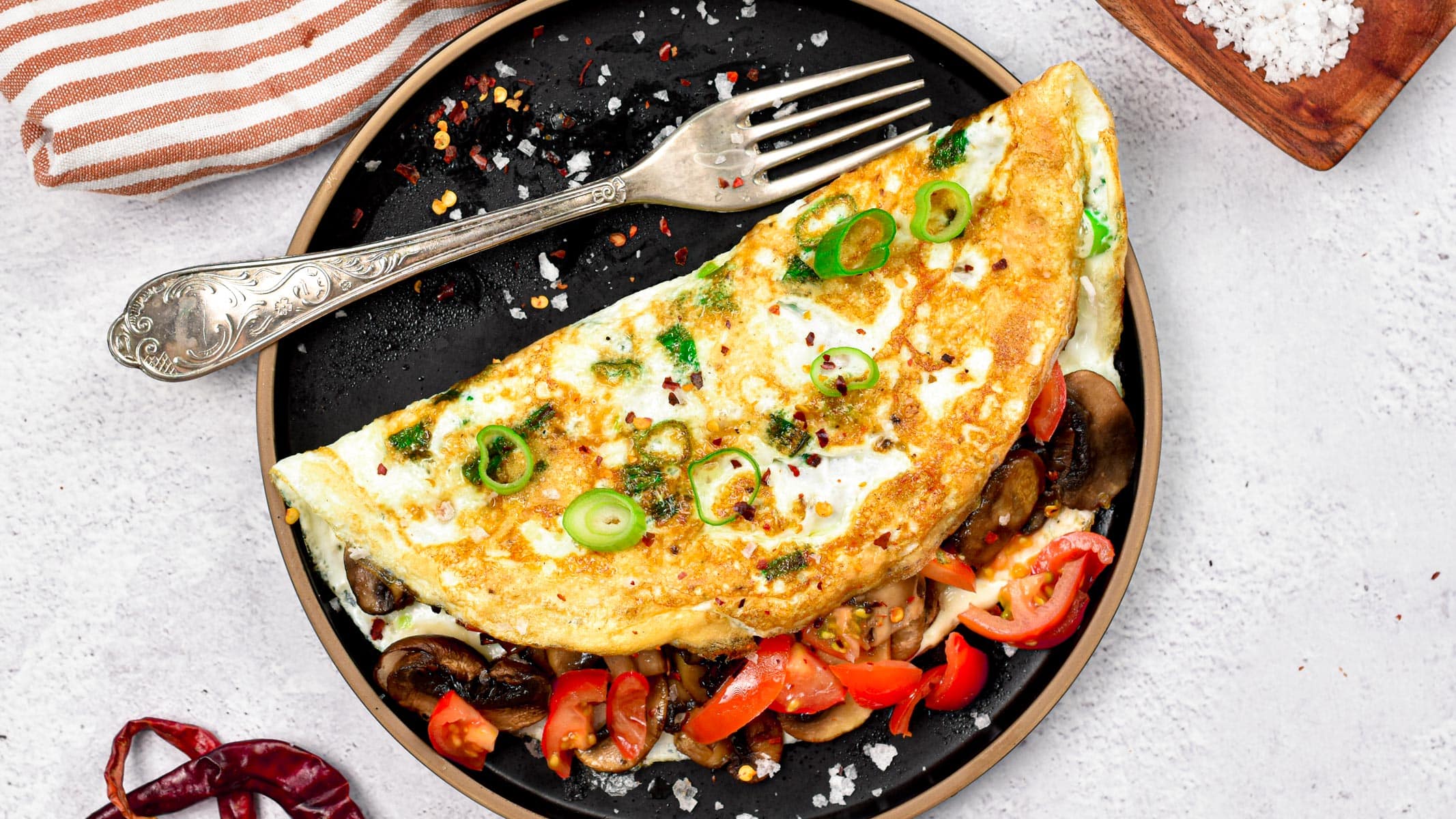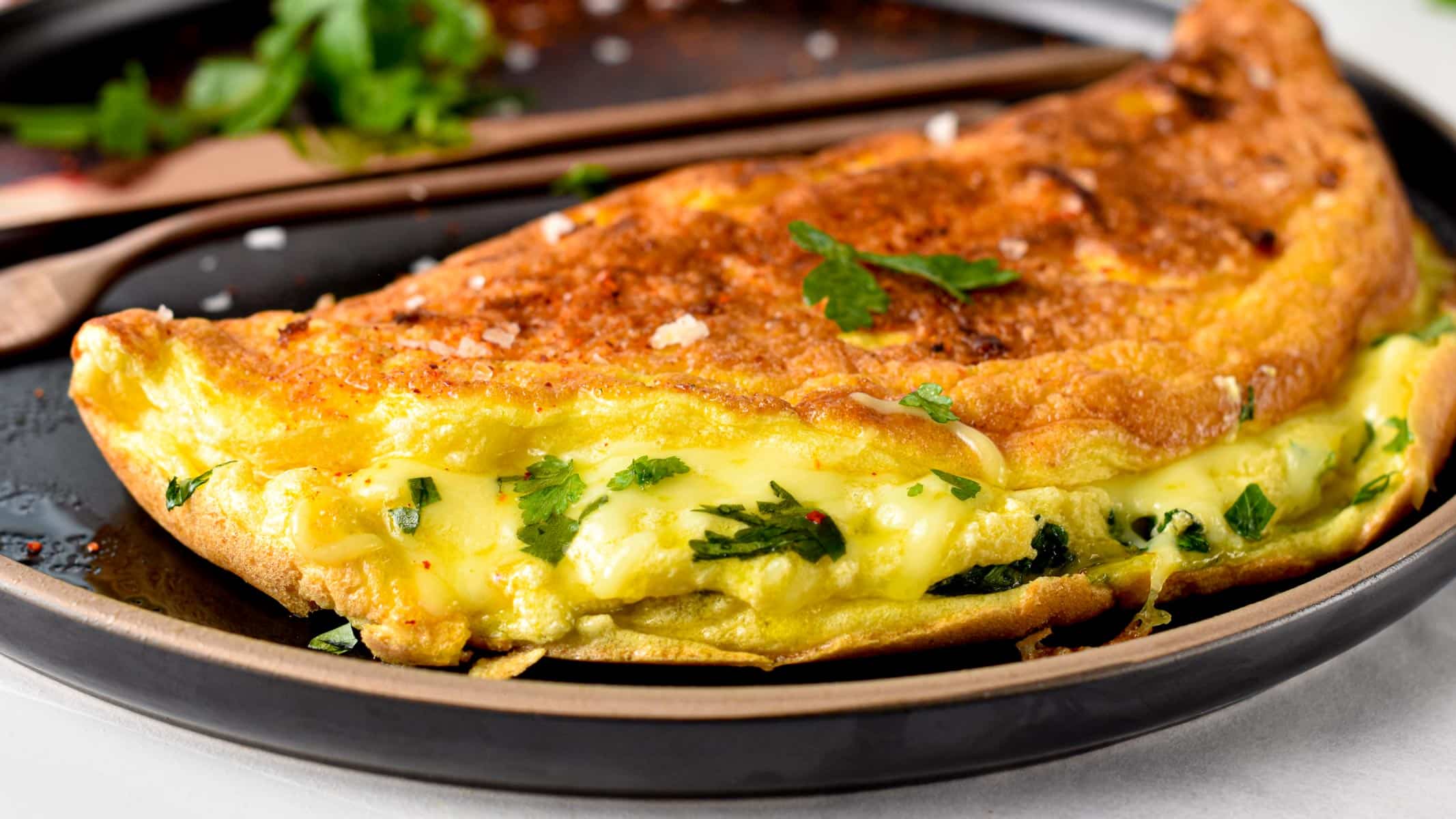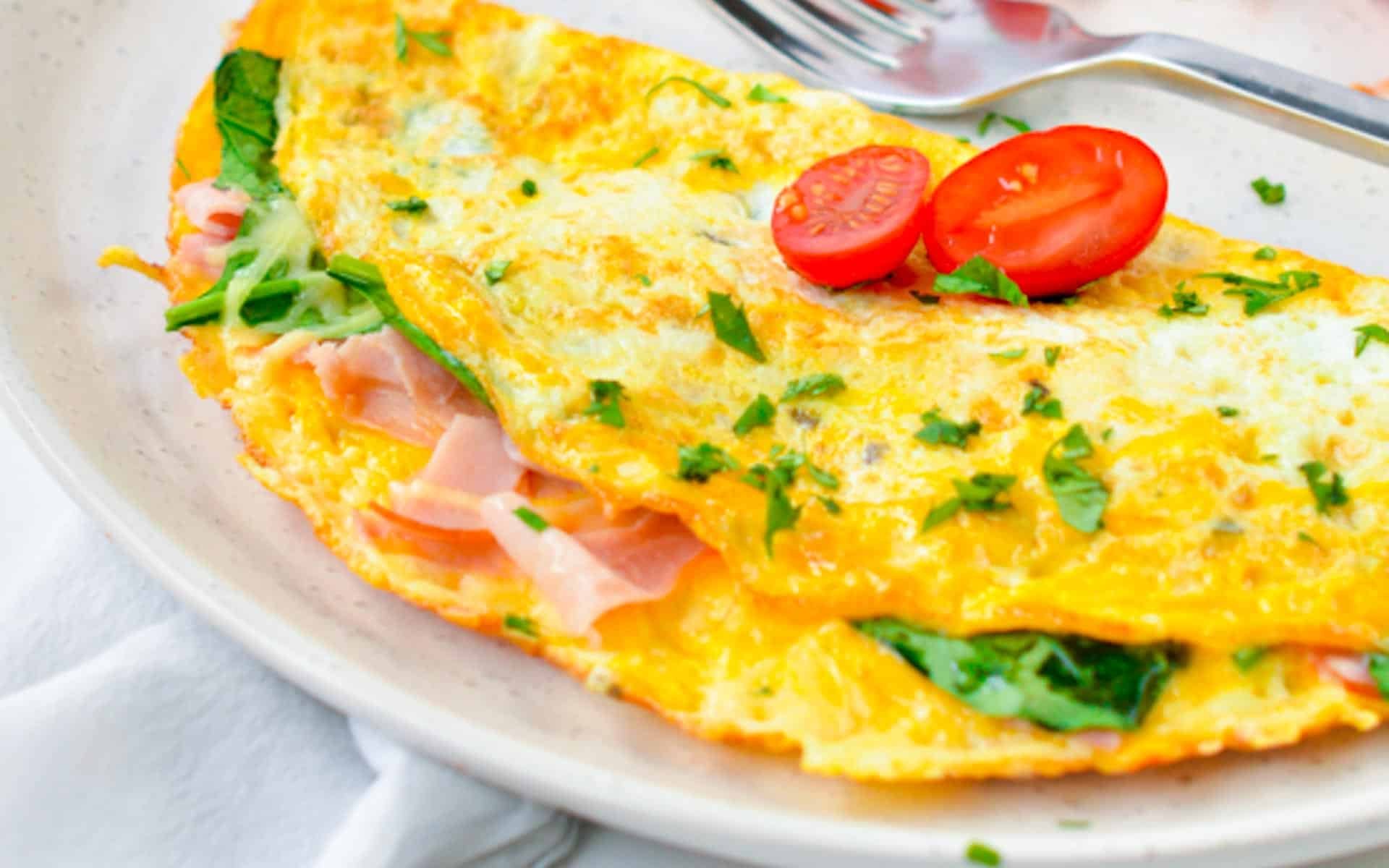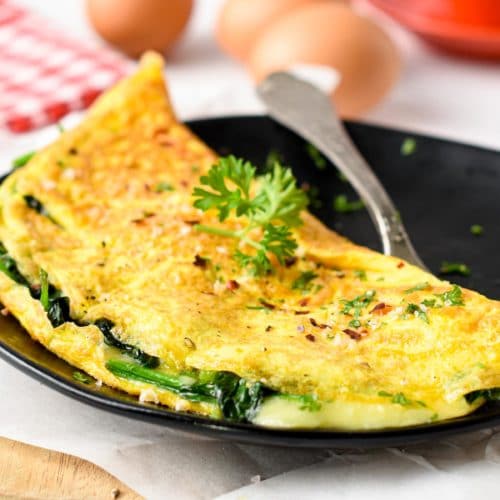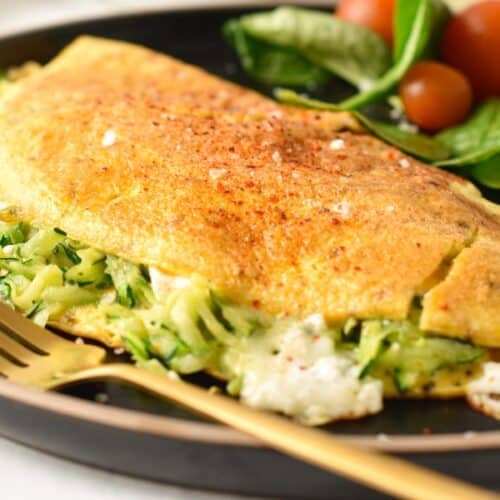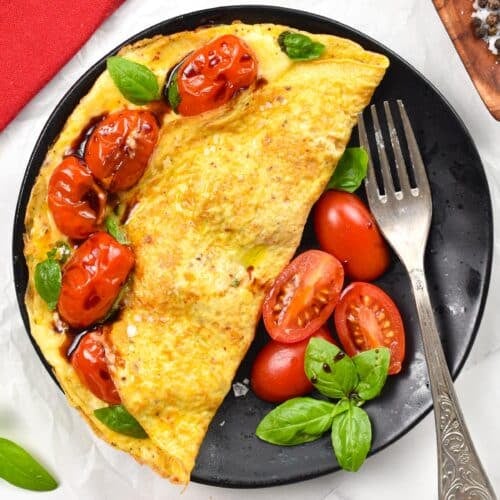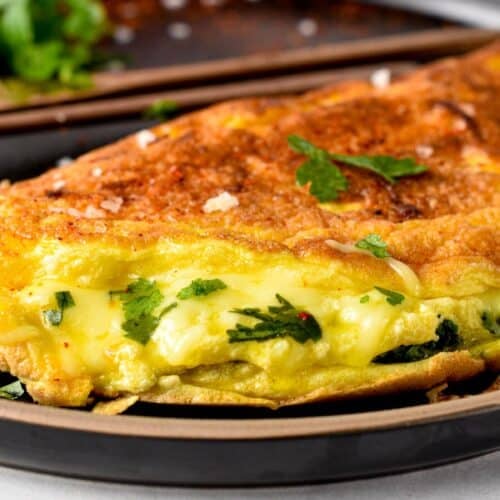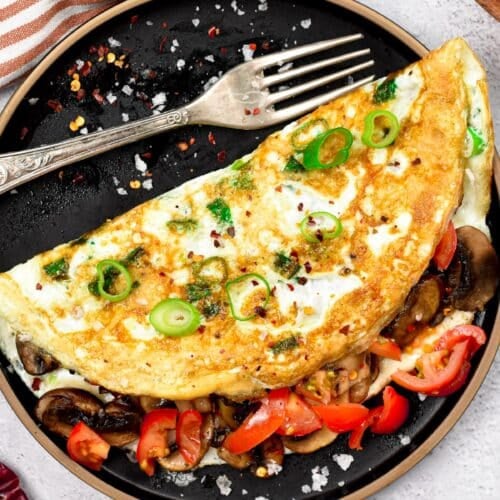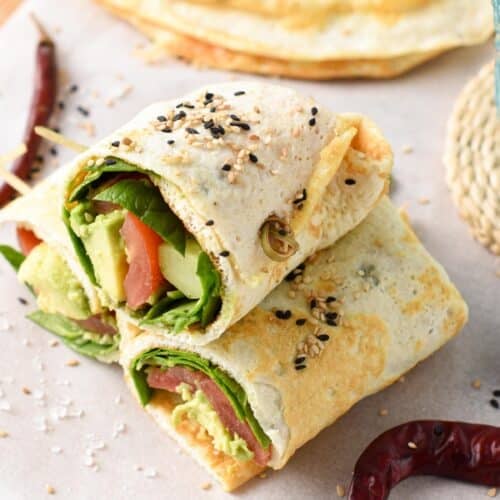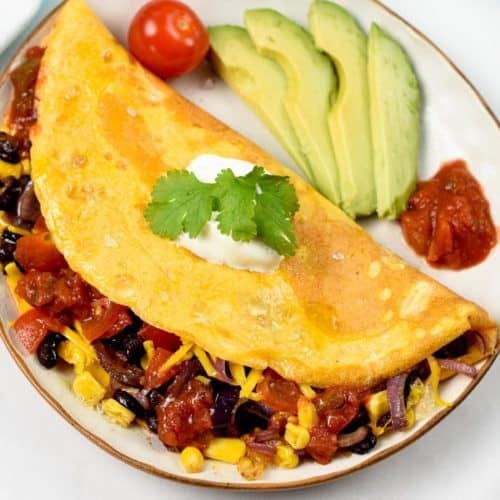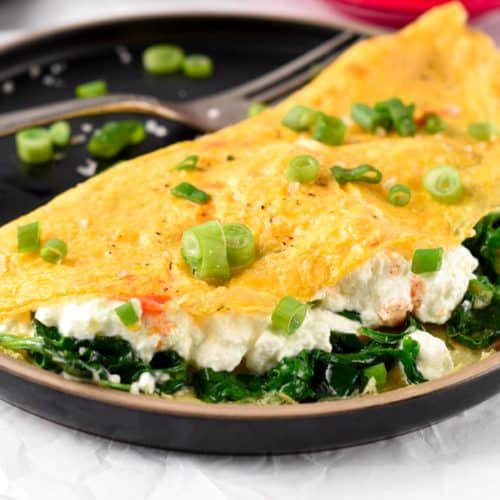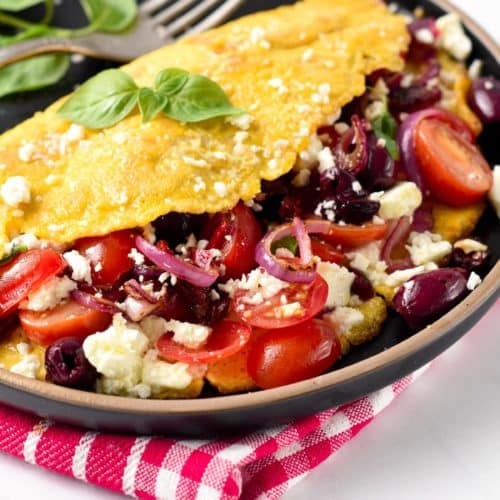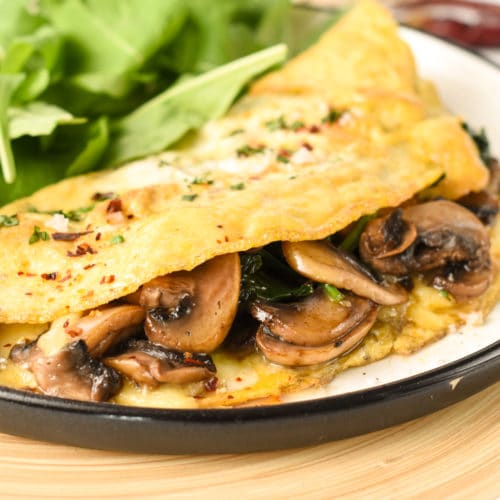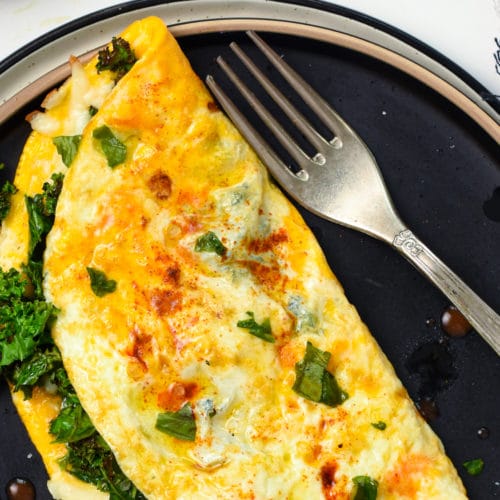
Omelette Recipes
An Omelette, or omelet, is a 5-minute dish made with eggs.
While it’s commonly associated with French cuisine, it’s also a staple of Japanese, Chinese, Spanish, Greek, and Italian cuisine.
What’s An Omelette?
A classic omelette is a breakfast or lunch recipe made by frying eggs in a pan after mixing their whites and yolks.
The most basic omelette is therefore made of two ingredients.
- Eggs
- Oil or butter to fry the eggs
Omelette is a French word that finds its origin in the word Alemelle which means thin blade.
However, omelettes are thought to have originated in ancient Persia.
Decorating An Omelette
Omelettes are a hugely popular recipe because they are very quick to make, almost impossible to fail, and they can be transformed to accommodate all tastes.
You can transform an omelette by just adding a few ingredients on top of it and folding the omelette in a half-moon shape.
Many recipes also include add-ons to the egg mixture, such as slices of bacon, herbs, or sliced vegetables.
Frequently Asked Questions
How Many Eggs Is An Omelette?
For a single serving of omelette, you can typically use two eggs.
Is An Omelette 2 Or 3 Eggs?
Unless you are very hungry, 2 eggs is normally enough in an omelette for one.
Do You Add Milk To An Omelette?
The classic omelette recipe does not include milk, but you can add a splash for an even more nourishing dish.
How Can I Flip An Omelette?
Omelettes are not flipped! You can instead fold it once the bottom has started to brown.
Include all your add-ons inside the fold to cook or warm them.
How Can I Make A Fluffy Omelette?
The more your eggs are beaten, the fluffier the omelette will be.
If you use a fork to just mix them, the omelette is going to be almost slimy, while if they are beaten with an egg beater, the omelette will be very fluffy.
How Many Calories Are In An Omelette?
Since a classic omelette contains only eggs and oil, it typically contains about 150 calories per 100 grams.
What’s The Best Way To Cook An Omelette?
The best way to cook an omelette is on medium heat in a non-stick skillet or a crepe pan and reduce the heat as it cooks.
What’s A Souffle Omelette?
A souffle omelet is a puffy version of the classic omelette made by beating the egg whites.
